
|
|




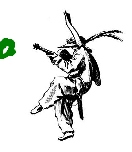


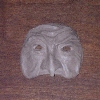
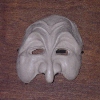
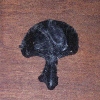
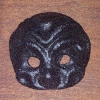
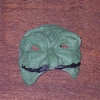
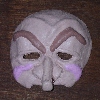
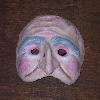
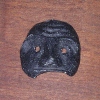
Teodoro Valicenti, Direttore |
Toll-free: 877-729-0054 |
Local: 717-682-6078 |
P.O. Box 87, Paradise, PA 17562 |
Masks & Characters of the Commedia dell'Arte An educational overview |
Written by Ted Wilson Commedia del Nuovo Mondo January, 2008 |
© January, 2008, Ted Wilson |
There have been a number of requests coming to me concerning information on the masks and characters of the Commedia dell'arte. I suppose that means that more and more people are finding this site through the search engines! In an effort to address these requests, I have put together this brief overview. Please let me know if you use this information and if it was at all helpful. |
Volumes could be and have been written about the masks and characters of the Commedia dell'arte. This is designed to be just a brief overview of the subject. It is important to note that many historians realize that much about this highly influential and colorful art form has been lost to the obscurity of history. There is much we don't know and may never know and some of that applies to the evolutionary and creative influences that led to the development of the characters and use of masks by the Italian comic improvisers of the Commedia dell'arte. There can be confusion when discussing "mask" and "character" in the context of the Commedia dell'arte. There are times when the two terms are used interchangeably. So infused is the mask with the character and the character with the mask that the terms for many practioners and theatre historians are synonymous. For our purposes in this overview, except where the standard reference requires otherwise, I will refer to the mask as the physical object used by the actor to portray the character and the character as the specific role portrayed by the actor. The Scenarios Before introducing the characters, it will be helpful to present the basic story structure of the most typical Commedia scenarios. In a nutshell (with emphasis on "nut" - the pun is intended), a young man and a young woman are or will become in love with each other and want to marry. At least one of two preposterous old men will be in a position to discourage and obstruct the young lovers from their marital wishes. It will be one or more comedic servants who will help foil the old men through unusually convoluted and foolishly witty plots that will eventually lead to one or more weddings at the end. The folly of the old men will be exposed, but forgiven for their foolishness; honest and faithful servants will get their just rewards while dishonest or conniving servants will get appropriate retribution; and the young lovers will get each other, as it should be. Sprinkled throughout the story might be other characters, masked or unmasked, that might provide parallel plots or tangential bits of "lazzi", which are comic bits of stage business that could be physical or could be pre-set dialogue, poems, or even songs. A Cast of Characters One criticism that many historians - theatre and otherwise - have leveled against the Commedia was that the characters were one-dimensional caricatures that lacked any sort of depth. The problem with this criticism is that it has most often been presented when the Commedia has been taken out of its unique performance context and an attempt has been made to compare it to dramatic literature. First and foremost, it is important to note that the Commedia was strictly a performance-oriented entertainment. This is one of the reasons why there is so little extant written information about it. With the incalculable number of scenarios performed over its 250 year heyday, there are surprisingly few left. By and large, having a collection of scenarios printed, like the most extensive extant collection published by Flaminio Scala in 1611, was normally done so in order to earn money for the writer. Otherwise, there was no reason to publish the text; it's intention was for performance. If we were to take the characters of contemporary television situation comedies out of their context, we could, indeed, level that same criticism of one-dimensionality. However, just as depth of character for the most successful television sit-com roles will only come by watching the show over a period of time, so too, will the depth of character for the Commedia dell'arte come only after exploring many scenarios. This is one of the reasons I have entitled my performance/workshop focusing on the history and characters of this classic comic style, "Commedia dell'arte: The Prime Time Television of the Italian Renaissance". Although the style is most associated with its masked characters, there were many characters that did not wear masks. Neither the innamorato (young man in love) nor the innamorata (young woman in love) wore masks. Nor did any of the women in the most traditional context of the Commedia. There was also another key character that did not appear in a mask, but did use white face. Whereas the unmasked characters did not often represent a region or city within Italy, the masked characters tended to come from a specific city or region and were, to a large extent, stereotypes of the people of that geographic location. In fact, along with the major masked characters of the Commedia, there were from time to time lesser characters from specific towns that might have only been played by local troupes of the town. The Masks The earliest extant references to masked comic actors improvising during fairs and festivals go back to the late 15th or early 16th centuries in which farcical master-servant skits are cited as a part of the street entertainment. Although it is now unknown how these spontaneous street improvisations evolved from a couple of actors doing a skit to troupes traveling from town to town performing full scenarios, it does make sense that along with the unmasked young lovers, the most basic of the Commedia's masked characters were that of two types of old men and two types of servants or valets. We may layer on top of these four basic characters a host of other supporting characters, both masked and unmasked, all of which contributed to the Commedia's comic depth and diversity and combined to weave what we might consider in modern parlance as a multi-cultural artistic fabric. I Vecchii were the old men of the Commedia. Normally, their role in a scenario was to provide an obstacle to consummating the relationship between the young lovers. They may play the father or some other protector/guardian of one of the young lovers or they may even play the foolish husband or suitor of a young innamorata. Gli Zanni, from which the word "zany" is derived, were the male servant characters of the Commedia. In some of the earliest extant scenarios or other artifacts, the character's name might have been Zanni or Zani. However, as we approach the latter half of the sixteenth century, we begin to find the term becoming more of a category that included two basic character types (Some might list more than two, but I will deal with other characters that may have filled a servant role, but had other characteristics that in my opinion demand a separate listing.) Pantalone The first of the Commedia's old men, the earliest references to this character referred to him as "Il Magnifico", The Magnificent. More than likely, it may have been a very early version of Pantalone that was being played in those now lost master-servant skits. Hailing from Venice, this miserly old merchant was so sensitive to the value of money that he became a slave to it. He was a worrywart and hypochondriac who by himself kept his good friend (we know they were friends because they were constantly fighting), Il Dottore (The Doctor), in business. Pantalone, often the town cuckold, while wandering round the docks looking for his young wife (who has likely found a more suitable partner), spies a boat in the harbor. He recognizes it at once as the shipment of oriental candle wax he ordered and that will make his fortune. Suddenly, the wind blows, the sea tosses, his ship capsizes, falls apart, and sinks. Frantically swearing every oath imaginable and threatening revenge upon the sea, he heads home to sooth his nerves by counting the gold and silver treasures he has hidden in the false bottoms of several wine casks. Pantalone's mask was traditionally painted brown and he became so well known for his prominent red pants that the term "pantaloons" is derived from his name. Il Dottore The other old man, The Doctor, who might be a doctor of medicine or a doctor of law, originated in Bologna, home to the renown and respected University of Bologna. Reflecting his origins within the walls of academia, his costume was the classic gown of a university setting. A truly Renaissance Man, Il Dottore attended most of the leading universities in the land holding more degrees than a thermometer and hasn't the slightest hint as to how to apply any of this vast learning. The Doctor and Pantalone are most often neighbors and friends who are most comfortable when arguing. As Il Dottore is conducting a lengthy diatribe with Pantalone on the necessity of health, he liberally peppers his speech with Latin and Greek, which he proudly butchers. Pantalone is unable to get a word in edgewise to tell the good Doctor he has an important business engagement. With his frustration reaching its limits at the exact moment Il Dottore is reaching the crescendo of his speech, Pantalone rips the skill from the desk and cracks it over Il Dottore's head. Unlike most of the other masks of the Commedia dell'arte, which were three quarter masks (covering the face from forehead to just above the up lip, leaving the mouth and chin free for speech), The Doctor's mask covered only his forehead and nose. It was traditionally painted black, although there are a few that were painted white. Arlechino The first of the two zanni, this traditional servant will be quickly recognized by the patchwork costume of the harlequin. It is said that all the zanni came from Bergamo, which is split into a lower city and an upper city. Those from the lower city, so the legend goes, were born with great wit and intellect while those from the upper town were considered dimwitted dullards. As the character developed over the centuries, both elements became apparent. If he was portrayed at illiterate, his "street smarts" were unsurpassed. Arlechino's physical agility is matched only by his nimble wit. With the naiveté of a mischievous child, his intellectual limitations help only to complicate his best of intentions causing all to wonder if he is a knave or a fool. Wailing with remorse at lost love, he debates alternative methods of suicide. Within moments of what would be his own self-inflicted death, delicious aromas draw him to the kitchen of a nearby inn where he finds joy and triumph in an oversized platter of spaghetti. Arlechino's mask was traditionally painted black. Brighella The other traditional zanni, who some consider coming from the lower town of Bergamo, was most at home on the seedy side of town. He especially enjoys prowling about the waterfront, watching and waiting for any opportunity for profit. Hung over and broke, Brighella awakens on a waterfront dock. He notices a wealthy merchant who has just docked and is struggling with his luggage. As if from nowhere, using his catlike movements, Brighella suddenly appears. "Ahh, your Excellency! Welcome! We have been expecting you. Let me help you with your luggage. I can take you to the finest hotels, show you where to get the best meals, and, of course, find for you the most comforting of women…" In no time, Brighella has not only made a tidy profit, which will be quickly spent on good wine and his own comforting women, but in only the most helpful way, he has lightened the traveler's bags by removing only the most awkward of valuables, no matter how small. Brighella's mask was traditionally painted olive green. Capitano The Captain, whose full name, given to him by the famous Commedia actor, Francesco Andreini, was Capitano Spavento della Valle Inferna (Captain Fearsome of Hell's Valley), tells us he has filled a hundred … thousand… cemeteries with the remains of foiled infidels. On the battlefield of love, he has slain the hearts of the most beautiful women in the world. This dauntless hero of love and war pretentiously struts his braggadocio while warning all within earshot that his sword is so deadly and violent, even he must keep his eyes closed as he finishes off his unfortunate enemy. When the young and beautiful Silvia tells him that she is in love with Flavio, Capitano draws his sword and guarantees poor Flavio's death by sundown. Silvia points across the piazza to her approaching lover. "Where is he? Which one is the dead man?" Capitano puffs. Silva points him out. "You mean the guy with all the muscles?" Suddenly, Capitano remembers a very important business appointment he must keep. "Tell that little runt that I shall return and he would do well to forever leave this city and to leave you to me, my young love." With that, The Gran Capitano hurries off in the opposite direction. Capitano often spoke with a Spanish accent and was a way for the Italian comici of the Commedia, and their audiences, to spoof Spanish military domination within Italy. Pulcinella Associated with the major southern Italian city of Naples, Pulcinella is said to have been born twice in a town similar to the zanni's Bergamo; the upper portion of the town where the people were intellectually challenged and the lower portion where the people were bright and witty. As a result of this dichotomy, although the physical characteristics may have been similar, the role may have been played in two different ways: one as a dullard, the other wittier. In some cases, the actor may play both, presenting something akin to a bipolar clown. In either case, Pulcinella, who eventually evolved into the British marionette, Punch, of "Punch and Judy" fame, could be a cold, cruel, and untrustworthy rascal with a penchant for violent outbursts, insults, and other crude language and behavior. Physically, he had a large paunch in front balanced with an equally large hump on his back. Despite these physical limitations, he could be exceedingly, if not oddly, acrobatic. He is known to be the only character ever cured of anything by one of Dottore's prescriptions. Pedrolino Although it is tempting to place him in the category of zanni because he was a servant, Pedrolino is quite different from Arlechino, Brighella, and their variations. He played without a mask, but powdered his face. He was a trusting, tender, and sensitive character who could play the role of lover as well as comic servant. He became known in France as Pierrot and from there, his lineage split in two. Half of Pedrolino's modern day descendents became mimes; the other half became circus clowns. Arlechino brings him a huge plate of spaghetti, saying it is compliments of Capitano. Pedrolino is so touched by Capitano's thoughtfulness that he begins to cry as he eats. Arlechino joins in the eating and crying and as they are finishing the entire plate, they wail even louder. Arlechino wanders away, still weeping, as Pedrolino is left alone licking the plate, also still weeping. Capitano appears and sees Pedrolino with his stolen plate of spaghetti. With sword drawn, he begins to chase Pedrolino, calling him a thief and threatening to cut open his belly in order to reclaim his supper. The Soubretta or Servetta These were the servant women of the Commedia dell'arte. Traditionally, none of the women of the commedia wore masks. These women were often considered "fresh and frisky" and "were sometimes crafty and nearly always of doubtful morals." They were most often involved with Arlechino, Brighella, Pedrolino, or any of the other various servant men. However, Pantalone was known to have their attentions now and then. Columbina, Pantalone's cook, is running through the courtyard trying to escape the grasp of Pantalone, who has been celebrating the completion of an especially profitable business venture. At the moment Pantalone is about to grasp Columbina, Arlechino, Columbina's sweetheart, tumbles out of tree, dagger in hand, yelling to Columbina that he will save her. Pantalone flees, yelling for protection from murderers. Arlechino trips over a courtyard bench, bumps his head, and knocks himself out. Columbina, overwhelmed with Arlechino's heroics, embraces him, kisses the swelling lump on his head, declares her undying love for him, and swears revenge on Pantalone. The Young Lovers The young lovers of the Commedia also wore no masks. One theory suggests it was so that the purity and honesty of young love could show through. The young lovers were the essence of love, often reciting poetry or singing songs of love. It was the young lovers who provided the basic plot for Commedia scenarios. It is tempting to assume that these characters were shallow or one-dimensional, but historically, one of the greatest actors of the Commedia was a woman by the name of Isabella Andreini, who achieved international fame not only as an actor, but also as a poet. Performing from about 1577 or 78 until her death in 1604, she was credited for transforming the role of the Innamorata by elevating it as an actor and giving the role great depth. Isabella, the beautiful daughter of Pantalone, is in love with Orazio, the handsome young son of Dottore. Unfortunately, as a part of a business deal when Isabella was first born, Pantalone promised her in marriage to Flaminio, the son of a very wealthy business associate. Orazio and Isabella are about to become engaged when Flaminio suddenly appears, reminding Pantalone of the agreement and claiming his bride. Isabella faints, Orazio challenges Flaminio to a duel, the Doctor demands justice from Pantalone for the insult to his family, Pantalone tries to appease everybody, and Flaminio wonders just how he's going to survive the duel, since he is really in love with Silvia but must use the marriage agreement to hold Isabella hostage until he collects an old debt from Pantalone, who has refused to pay Flaminio's family due to a misunderstanding in a certain transaction that took place ten years earlier. Get the picture? A Few Other Thoughts Masks vs. No Masks Although this is only speculation, I have come to the conclusion that the use of masks for some characters and the lack of masks for others directly relate to the character's regional roots. Like any stereotype, a mask is a fixed and unchangeable depiction of certain characteristics. So it follows that characters with regional associations took on those fixed stereotypes associated with that geographic location and that allowed the evolution of a fixed mask. On the other hand, the unmasked characters tended not to be associated with a specific city or region and had no fixed characteristics on which to base the fixed characteristics of a mask. Therefore, no masks evolved out of these roles. Let me apply this to a couple of specific characters. Although the masked Capitano did not come from a specific city, he was from Spain and his largely bumbling braggadocio provided a means for Italian audiences to make light of Spanish military intrusions throughout Italy's history. Pedrolino, on the other hand, did not hail from any particular place and, although he wore a powdered face and had a relatively fixed costume, perhaps helping to maintain his association with the other servant characters, this lack of geographic stereotype and an associated fixed mask gave him greater flexibility in performance range. A Contemporary Parallel While leading a seminar on the Commedia dell'arte several years ago, I struck upon the concept that I have used ever sense and that is that the Commedia was Renaissance Italy's equivalent to today's prime time television. In my own moment of creative improvisation, I selected off the top of my head a popular television show in order to discuss the characters as caricatures of some modern foible or stereotype. The show I picked was one of the most popular on television at that time and one that was one of my favorites: Cheers. I was as amazed as everyone else when I went one by one through the characters and discovered what I consider to be direct parallels to the most basic characters of the Commedia. Here are those parallels: The Young Lovers: Throughout were Sam Malone and Diane Chambers, but in later seasons when Shelley Long as Diane left as a permanent part of the show, Kirstie Alley as Rebecca Howe replaced her. Rebecca, although futilely pursued by Ted Danson's Sam Malone almost like a young Pantalone pursuing the inamorata, turned her romantic attentions to Robin Colcord (played by Roger Rees). The love triangles among these characters were worthy of any scenario from the Commedia - not to mention the comedies of William Shakespeare. The Zanni: There was no better or more loveable Arlechino than Coach Pantusso, played by Nicholas Colasanto. Upon Colasanto's death, his replacement behind the bar was another variation of Arlechino, Woody Boyd, a character that became a springboard for actor Woody Harrelson. In the Commedia, the other zanni was the carousing, wine-guzzling Brighella, who most often could be found at the local inn. Although toned down a great deal, there was no one else who could even come close to Brighella's modern day parallel than the beer guzzling, permanent fixture at the bar, Norm Peterson, played by George Wendt. Capitano: A braggadocio blowhard like Capitano met his match with Norm's good friend, John Ratzenberger as Cliff Clavin. As a mailman, Cliff even had a uniform! The Old Men: Except for Sam Malone's impossible pursuit of Rebecca Howe, this is one major character of the Commedia that has no parallel in this show. However, there is no greater direct descendant of the pompous, over-educated Il Dottore than the most ineffective but perhaps longest running psychiatrist on television, but Dr. Frasier Crane. The Servetta: Who other could fill this role so completely than Rhea Perlman as Carla Tortelli, who eventually added the name LeBec. These parallels tell me that the characters of the Commedia are more than just historical stereotypes. Indeed, their qualities and nature can be looked at as human archetypes, recurring throughout history, crossing over cultures, and reflective of the broader human condition. With this in mind, I fully believe that the Commedia dell'arte is not only still relevant to today's audiences, it has been and will always be relevant to audiences throughout all time. |
Two variations of Pantalone. |
Two variations of Arlechino. |